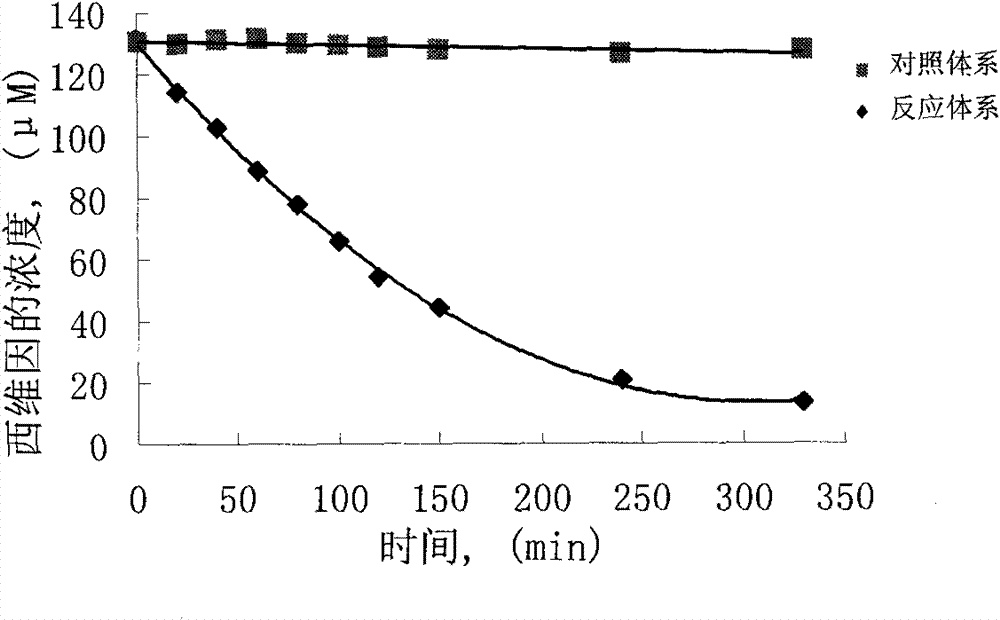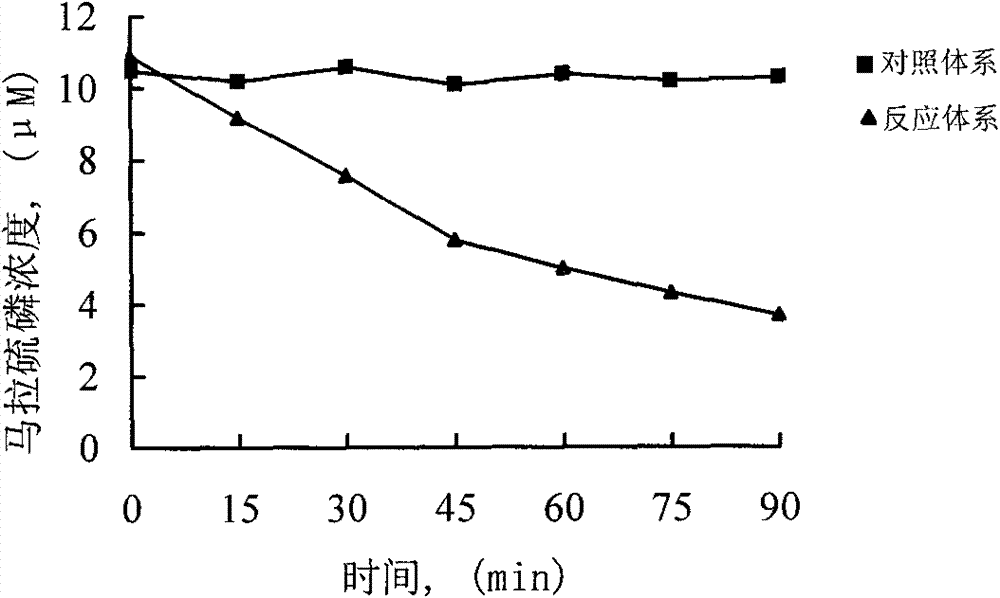Detoxication engineering bacteria, and preparation method and application thereof
A technology of engineering bacteria and detoxification esters, applied in botany equipment and methods, biochemical equipment and methods, applications, etc., can solve the problems of excessive pesticide residues, export losses of agricultural products, export scale restrictions, etc., and achieve a widening of the degradation spectrum , Solve the pollution problem and eliminate the effect of loss
- Summary
- Abstract
- Description
- Claims
- Application Information
AI Technical Summary
Problems solved by technology
Method used
Image
Examples
Embodiment 1
[0039] Embodiment 1, the construction of engineering bacteria
[0040] 1. Construction of recombinant plasmid (pETDuet-E4-mpd)
[0041] 1. Preparation of hydrolase gene
[0042] The DNA shown in sequence 4 is artificially synthesized, the 11th to 901st nucleotides from the 5' end of sequence 4 are the hydrolase (mpd) gene, the upstream is the BamHI site, and the downstream is the HindIII site.
[0043] 2. Preparation of detoxification esterase gene
[0044] The DNA shown in the artificially synthesized sequence 2, sequence 2 from the 8th to the 1666th nucleotide at the 5' end is the detoxification esterase (E4) gene, its upstream is the BglII site, and its downstream is the XhoI site.
[0045] 3. Construction of recombinant plasmid (pETDuet-E4-mpd)
[0046] ① Digest the hydrolase gene in step 1 with restriction endonucleases BamHI and HindIII.
[0047] ② Digest plasmid pETDuet-1 with restriction endonucleases BamHI and HindIII.
[0048]③ Ligate the digested product of ste...
Embodiment 2
[0082] The crude enzyme solution of embodiment 2, Pet30-mpd bacterial strain is to the degradation of carbaryl and malathion
[0083] 1. Degradation of carbaryl by crude enzyme solution of Pet30-mpd
[0084] The degradation of carbaryl was determined according to the method of Hayatsu and Nagata (1993), specifically as follows:
[0085] Buffer: 10mM KH 2 PO 4 / KOH buffer; pH 7.5.
[0086] Chromogenic reagent (DBLS): Dissolve 4.5mg of Fast Blue B salt in 4.5ml of water, and then add 10.5ml of 5% SDS solution.
[0087] Reaction system (20ml): add Carbaryl and the crude enzyme solution of the Pet30-mpd bacterial strain that embodiment 1 prepares in buffer solution, contain 130 μ M Carbaryl and 5ml crude enzyme solution (107U ml -1 ).
[0088] Control system (20ml): replace the crude enzyme solution with deionized water, and the others are the same as the reaction system.
[0089] The reaction temperature was 37°C, and 2ml samples were taken every 30 minutes. Add 0.5ml fres...
Embodiment 3
[0098] Embodiment 3, the detoxification experiment of chicken chlorpyrifos poisoning
[0099] Adult aircraft carrier chickens (Gallus gallus) (12 months old, weighing about 1.5 kg) were purchased from the Experimental Chicken Farm of Beijing Agricultural University. After the chickens were bought back, they were fed individually, and the experiment was started after at least one week of adaptation to the environment. Free access to food and water, during the experiment, the temperature of the chicken house was controlled at about 20°C, and the light was about 10h per day.
[0100] The experimental chickens were divided into seven groups, 10 in each group:
[0101]A group of tests: give chlorpyrifos (in empty capsules, the dose is 170mg / kg, orally) and Pet30-mpd (engineering bacteria) (0.5g wet thalline is packed in empty capsules, orally) at the same time;
[0102] Experimental group two: first give chlorpyrifos (put into empty capsules, the dose is 170mg / kg, take orally), t...
PUM
 Login to View More
Login to View More Abstract
Description
Claims
Application Information
 Login to View More
Login to View More - R&D
- Intellectual Property
- Life Sciences
- Materials
- Tech Scout
- Unparalleled Data Quality
- Higher Quality Content
- 60% Fewer Hallucinations
Browse by: Latest US Patents, China's latest patents, Technical Efficacy Thesaurus, Application Domain, Technology Topic, Popular Technical Reports.
© 2025 PatSnap. All rights reserved.Legal|Privacy policy|Modern Slavery Act Transparency Statement|Sitemap|About US| Contact US: help@patsnap.com


